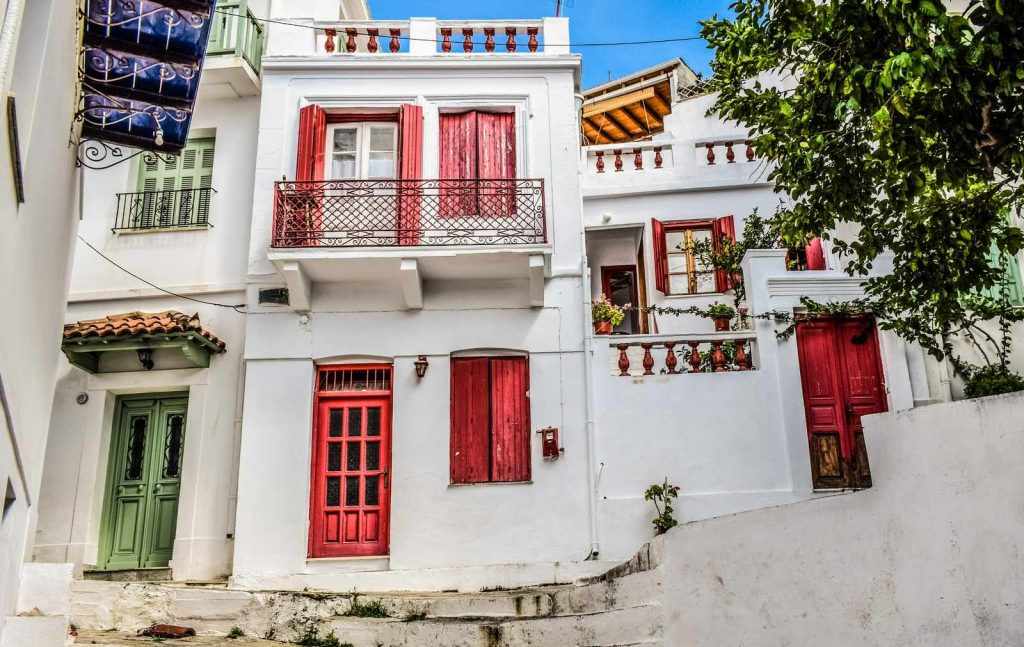Speak of the Greek islands and the images people conjure in their minds are those of the Cycladic islands such as Mykonos and Santorini. But, for eclectic people, there are other less well-known gems of Greek Island life. Skopelos Island is one such gem. An emerald green island floating in an Aegean blue sea.
Far less commercialized and of easier rhythms, the makings of a quality lifestyle. It is a lifestyle that is reflected in a very different architecture that is closer to the rest of the northern Aegean sea and neighbouring Pelion, than that of the more austere and stark Cycladic rhythms.
People here on this little island have also managed to hold onto their traditions and local culture.
The history behind Skopelos architecture
Skopelos Town, the capital or Chora as it is known in the broader Aegean, is the settlement that best reflects the characteristic architecture of the island. For this reason, it has been declared as a heritage site maintaining its unique layout that consists of narrow streets and steps, many chapels, and beautiful whitewashed houses and yards with flowers.
The architecture of the island is characterized by two categories, vernacular (the Macedonian and Rural type) and the newer neoclassical, established after the island’s liberation from the Turks (mid-18th to the 20th century).
The local architecture has the main characteristics of narrow roads and stone-built houses with wooden roofs covered with Pelion stone plaques and wooden balconies over the main entrance. The early neoclassical architecture is distinguished by its large constructions with marble balconies and neoclassical features. These are with aristocratic facades, marble balconies, and rich decoration built by sea captains and merchants. Strong Venetian, Macedonian (from nearby Pelion) and newer Neoclassical influences are apparent.
The newer houses were built using local materials like stone and wood. They are two and three-storey buildings with wooden beamed roofs and ceramic roof tiles.
Surrounding Skopelos Town, outstanding architectural features are to be seen at any of the Byzantine monuments, and monasteries.
The architecture of Glossa the only other town and port is best known for its characteristic Macedonian features and the very picturesque green and white neighbourhoods.


